|
Last night during the Craft of Storytelling class I am teaching, the subject of writing memoirs came up. I spoke a little about my experience regarding the memoir about my thirty-year fandom of the pop band Duran Duran, and it inspired me to share more about both the experience as well as tips for writing a memoir.
1. The same rule applies to writing a memoir as to writing a novel: Tell a good story. And use the same elements to do so: sensory description, engaging “characters,” dialogue, conflict, and the moment(s) of revelation. 2. Know your audience. For me, this is a more conscious (and constant) task when writing nonfiction. Whereas in a novel the bond occurs between readers and characters, in memoir the bond is between readers and the writer. Thus, as the memoirist you must connect with readers and know something specific about them at the outset. The obvious audience for Friends of Mine was Duran Duran fans, but I also wanted to attract readers who felt equal adoration for their favorite band or artist, be it The Beatles or Beyoncé, and perhaps even recruit new Duran Duran fans. I knew my audience would relate to certain aspects of my story—collecting posters and watching music videos during the 80s, for example—but I was less prepared for the connection to the more personal aspects. I continue to receive beautiful letters from people who were touched by the book. 3. A memoir is almost never about what you think it’s going to be about. Memoir and autobiography overlap in that you’re writing about your life. However, a memoir focuses on specific events rather than a chronology. You can write about one particular event, or you can write about several throughout your life. But you’ll find patterns and threads that connect each event. It could be a theme, a lesson learned, a person, or all of the above. My original plan was to write about being a Duran Duran fan in the 1980s. The more I wrote, however, the more I realized the memoir was about so much more than my “relationship” with the band. It was also about long-term relationships with family, friends, music, and writing, and the roles they played in how and why I loved the band. Everything connected to one thread: Duran Duran’s role in my life. 4. Writing a memoir is like undressing in front of an audience, and pulling other people’s pants down. I love this popular Anne Lamott quote: “You own everything that happened to you. Tell your stories. If people wanted you to write warmly about them, they should have behaved better.” But doing that sometimes comes at a cost. The stories I told involved other people—some were favorable, and others were not. Some were downright painful. I had to be considerate of them, especially my family and close friends who were being featured. But I also had to serve the truth of the story. I couldn’t sacrifice that in attempt to spare someone’s feelings. I changed several names and asked others for permission to use their real names. I sent my family and close friends the manuscript before I published it. Although I didn’t guarantee I would remove something they objected to, I promised to listen to and consider their concerns. If you’re casting someone in a bad light just to be vindictive, or telling a story simply for shock value, then I think you need to re-evaluate your priorities and consider your integrity. And once it’s out there, it’s out there. If you’re revealing something personal, then you must accept the consequences. Some may thank you for it. Some may judge you. Others may even stop speaking to you. 5. There’s a fine line between “filling in the details” and outright making things up. Memories become foggy over time. I want to tell the truth about the event or experience with as much detail and clarity as possible, but what if some of the details are foggy? Taking creative license with something like clothing is OK. For example, if I’m writing about falling off my bicycle when I was eight years old, I might have described my outfit as a Shaun Cassidy T-shirt and hand-me-down jeans, because that was typical of my wardrobe. However, if I made up a detail such as going to the hospital following the bicycle fall when in reality I had the wind knocked out of me, then my memoir loses authenticity and my credibility as a writer suffers. Above all, the account needs to be authentic. 6. Photos amplify and enhance the story. I read several memoirs before writing my own and found that the photographs accompanying the text added an emotional layer to the reading experience. I’ve never needed this for fiction. When written well, a novel invites you into its world and you’re able to fully immerse yourself using your imagination. But perhaps because a memoir involves real people, seeing photographs from the time being written about strengthens the bond between writer and reader. Most of my success as a novelist comes from e-book sales. However, I promote the print version more than the e-book version of Friends of Mine because the paperback contains many more photographs than the e-book (due to digital file size constraints). I also love the book’s cover design—the doodles are all from my actual junior high school notebook—and physically holding that portable piece of art. 7. Be prepared to live with your subject for a long time. A memoir might not always be about you. It might be about someone close to you, like a grandparent or a teacher. Regardless, your subject will likely conjure many memories and emotions. For however long your memoir takes to write, revise, edit, and publish, your subject, people, and feelings will be with you. Will you be able to handle that? I was afraid I’d be sick of Duran Duran after spending a year working on Friends of Mine. The opposite happened: I fell in love all over again, and I made some wonderful new friends as a result. Sign up for my mailing list for news about my upcoming memoir course, both in Billings and online! Learn more about writing from my book The Writer’s Habit, coming May 23! Funny how an intention acts like a magnet. This past Thursday, the NOVA Center for the Performing Arts in downtown Billings showed Jacob Bernstein’s documentary Everything is Copy about his mother, Nora Ephron. The showing coincided with the play opening this week, Love, Loss, and What I Wore, co-written by Nora and her sister, Delia Ephron, based on the book by Ilene Beckerman (both the script and the book are on my TBR list). I had just finished reading I Remember Nothing the night before, adding it to the growing Finished list of Ephron writings I’d committed to reading this year. The audience was cozy—three women (in addition to myself), one of whom was starring in the play; and two men, one being my husband, the other being one of Billings’s best actors and directors. Of these five attendees, I was likely the only person to have seen the film multiple times, although not recently. My husband had watched it the first time with me. And yet, I was as riveted as I was the first time, reveling in my co-viewers’ reactions while immersing myself in the images of the woman, interviews with those who knew her best, and excerpts from the writing I’ve been so intimate with these last three months. Writing, like its author, that I respect and admire and sometimes even envy. The more I read, the more I miss her. Bernstein reveals his purpose right away—if his mother lived by this mantra “Everything is copy,” and made a career out of re-purposing the stories of her life, making them both funny and so matter-of-fact, then why did she not tell anyone about her illness? I’ll not divulge the answer—you should see the film and decide if those who posited their theories were right—but it leaves me wondering about my own penchant for “everything is copy.” Is this the reason I’ve been so drawn to Ephron’s work all these years, because I followed this philosophy even before I was conscious of it? What have I chosen to keep private, and why? Is privacy extinct now, a myth? The documentary ended to sniffles and tissues dabbing eyes as the lights came on. Even my husband was misty. We all chit-chatted for a bit afterwards. When I was introduced to the women (by our friend, the actor) as a novelist, one of the women asked what kind of novels I write. Not quite ready to put words together, I pointed to the screen. “Well, what we just saw,” I said. They seemed impressed. My thoughts now seeming to catch up, I quickly corrected my mistake: “What I mean is, that’s what I’m trying to do. I keep falling short.” The sadness stayed with me as my husband and I walked hand in hand to the car. I’ve been privileged to have many of those whose talent I admire and who have left a lasting impression on me--Aaron Sorkin, Patrick McDonnell, Duran Duran—but I will never get to meet Nora Ephron. I don’t know what I would have said to her had I had the chance—there’s a slight relief there. But I find myself wanting to somehow please her. I want to produce the same kind of material using the same subject matter, and yet somehow still manage to be authentic. I want people to read my work and say, "If you like Nora Ephron, you'll like Elisa Lorello." It’s not so much that I want to write exactly like her, but I want to write something that would have made her take notice. That would have made her want to make a movie about it. That would have made her invite me over for lunch, even if she did chide me for being such a picky eater. Most of all, I want this Year of Nora Ephron to have a purpose in that I want to give something back that has focus, direction, meaning. I am hoping that this blog series will uncover it, one post at a time. Until then, I’ll just keep reading. And, as Nora was once instructed to do, take notes. Do you have a favorite Nora Ephron quote? I want to know. Please leave a comment and share. I am pleased to announce that Kathy G is the winner of a Junior's Cheesecake! Our runner-up winner, Beth P, will receive a Faking It audiobook. Each entrant was assigned a number by order they signed up. Winners were selected via the random.org generator.
CONGRATULATIONS, Kathy and Beth! I will be contacting you for your mailing information. Didn't win? There will be other opportunities. Here's a sneak peak at what's coming:
As a subscriber to the mailing list, you will receive special offers and opportunities for giveaways, advanced copies, and more. Stay tuned! I am so excited to reveal the cover for my new book, The Writer's Habit! It was designed by none other than my husband, Craig Lancaster, and I am thrilled with it. We're still working on a release date, but I promise that it's going to be very soon. Stay tuned to find out more details, and sign up to my mailing list at the bottom of my Contact Page to get exclusive offers and opportunities. And... here it is: What do you think? Post a comment below!
If you’re an avid reader, then you know all too well what it’s like to have bookcases in every room, hardcovers and paperbacks resting on bedside tables and living room chairs, patiently waiting to be read. Likewise, you also probably know what it’s like to spend a week’s pay on Kindle downloads, or leave the library with an armful of books knowing you’ll need to extend your borrowing time.
And then there are those books you’d want to have with you on that deserted island, or save if, god forbid, there was a fire. Or, if you’re like me, you pack them in a box marked SPECIAL BOOKS when you move and NO ONE CAN HANDLE THIS BOX EXCEPT ME. I debated on whether to make two separate lists—one for books about writing and the other general fiction books—but then I thought, hey, it’s my island. I only get seven. Also, I'm not including my own because I’ll just assume they’ll eventually wash up on the island shore. Or I’ll write new ones to pass the time. It’s hard to narrow down to seven, and a year from now I might find myself thinking: You put that on the list? Nevertheless, here they are, in alphabetical order by author’s last name: Heartburn (Nora Ephron) You’re going to be hearing a lot about Nora Ephron from me this year thanks to my new blog series and project. I first read Heartburn in the late 90s, while I was an undergraduate and in need of pleasure reading. Back then I found it likeable enough, but I wasn’t in the headspace to truly accept it for what it was and is—a story about telling stories. When I reread it years later, after I wrote and published my own novels, I found a whole new appreciation for it. I revered it even further when I used an excerpt from it for an exercise in analyzing writing style. Now I read it every other year, at least. Sometimes annually. Not to mention it’s funny. That it’s not-so-loosely based on Ephron’s marriage to and divorce from Carl Bernstein is almost voyeuristic, although I didn’t care for the film version. Maybe because I’ve never stopped thinking of Dustin Hoffman as Carl Bernstein. Best of all, Heartburn is just so cleanly written. So clear, so concise, so fluent—the mark of someone who’d spent a lot of time as a journalist (a common trait you’ll see in almost every one of these authors). The Other Side of the Story (Marian Keyes) Before I became a novelist, I thought I would offset my academic writing with personal essays, ones that were funny yet had a point. I began reading books written by David Sedaris, Douglas Adams, and essays by Dave Barry to try to glean some tricks from them. (I know. No women in that list. Hang on though, because look at who I’m featuring.) My friend Susan enthusiastically recommended The Other Side of the Story, and I bought it in a used bookstore in Cary, North Carolina. Since then I've been a big Marian Keyes fan, even though I haven't loved or read everything she's written (yet). However, any book that makes me laugh out loud—repeatedly—is a keeper. The story of three characters—Jojo, a literary agent; Lily, Gemma, an event planner with a lot to say; and Lily, one of Jojo’s clients who has been accused of stealing not only Gemma’s idea, but also her boyfriend—is told via letters, emails, phone calls, and third-person perspectives. Every character is flawed but so easy to feel for. Each woman finds herself in a situation she doesn’t quite know how to get out of, and there’s no better backdrop for both a comedic or compelling story than that. I need to read it again. It’s been too long. On Writing (Stephen King) To some degree, I think this book is the writer’s bible. My twin brother presented it to me for Christmas the year it debuted, around the same time I was immersed in my graduate studies and reading everything from Kenneth Burke to Noam Chomsky. I was learning about rhetoric and composition theory—the study of how and why we write, if you will—yet On Writing is the book that transformed me into a novelist. I didn’t even know this at the time I read it. I’ve read and collected many books about writing, and even written my own (stay tuned for the cover reveal tomorrow!), but On Writing is one of those I can read or listen to (read by King on audiobook) and, if not learn something new, be reminded of something remarkable about the craft. And I’ve always taken more to the craft aspect than the art aspect. I might even argue that every author on this list is a craftsperson. I just don’t think you can go through life as a writer without it. Edward Unspooled (Craig Lancaster) Yes. My husband. But before Craig was my husband, he was my friend. And before he was my friend, he had written this book called 600 Hours of Edward that went through a similar journey as Faking It, from a self-publishing success to an international bestseller. We’d met in 2011 and were mostly the kind of Facebook friends who occasionally quipped in the Comments section, but it wasn’t until a couple of years later when we actually started reading each other’s work that our mutual admiration and respect truly developed. And after we finished reading each other’s fictional stories, we began to tell each other our personal ones. The more I learned about him, the more I wanted to know. This was all in a platonic sense. But after his marriage ended and the writing was on the wall (ugh—sorry. I couldn’t help it), we had already built a solid foundation on which to begin adding the bricks. Given that The Fallow Season of Hugo Hunter is my favorite of Craig’s books, you would think I’d add that to my pile instead of the third installment of Edward’s journey. But there’s something about Edward Unspooled. Maybe it’s because I have a thing for epistolary novels. Maybe it’s because there are so many laugh-out-loud moments in this book too, and again you’ve probably detected a pattern in addition to the journalist thing. (Craig’s journalism career spanned twenty-five years, by the way.) Maybe it’s because Edward is just so lovable and endearing, and it’s a book about a husband and wife who are so well-matched and love each other dearly. And if I’m on this deserted island without my husband, then dammit, I want this book. The Craft of Revision, 1st edition (Donald Murray) I am eternally grateful to my friend and former mentor Mary for giving me this copy. Here’s the ultimate irony: I think Murray revised this book too much by the fifth edition, which no longer resembles the first. The first is the best. It’s the one that changed not only the way I look at revision, but also the way I taught it. I would share excerpts of this with my students, and there was always one or two in every class who “got” it. Murray was another from the journalism pool. (Sadly, he is no longer with us.) He wrote in a way that seems as if he didn’t pore over every word choice, incessantly reread and rewrite until he’d honed it to every word in its right place. As if it all flowed out on the first shot. I think there’s a strange kind of misconception about writing style that is seemingly simplistic. As if eloquence is the marker for what makes writing “art.” I certainly appreciate those who write beautiful sentences. But the books I keep coming back to, the ones that leave me thinking long after I’ve turned the final page, are the ones that are written in ways that are put together in the way a woodworker makes a chair. They are still beautiful (I once again recommend you read The Fallow Season of Hugo Hunter, as well as This is What I Want—there are some sentences in there that I downright envy), but they’re also, if you will pardon the metaphor, easy to sit in. Straight Man (Richard Russo) In the same way everyone who aspires to be a writer should read On Writing, everyone who aspires to be in academia—in particular, an English department—should read this book. The absurd politics, the affairs and innuendo, the ever-looming publish-or-perish threat…it’s all there, plus—wait for it—the humor, beginning on the very first page when Hank’s nose falls victim to a collision with a spiral notebook. Straight Man is one of those books I read cover to cover thinking, Man, I know this place. It had even prompted me to write my own academic farce, one that still sits in a drawer, because even though I love every character in it, I never quite found the story. Maybe one day it will finally come to me. It needs to be told. In the Pleasure Groove: Love, Death, and Duran Duran (John Taylor) Do I really need to say any more? I mean, you’ve got that fabulous Patty Palazzo-designed cover. You’ve got John Taylor when he was just a glasses-toting geek listening to records in his bedroom (weren’t we all that kid in one form or another?) You’ve got Duran Duran in its glory days and in its not-so-glory days. You’ve got sex, drugs, and rock-and-roll. And you’ve got a pretty well-written memoir. And yes. I’ll say it. Pictures. In many ways, I think we treasure certain books not only for their stories or their style or characters but for their memories. In the same way I am happily transported to my UMass-Dartmouth days when I read Straight Man, and I will forever remember my dearest love reading Edward Unspooled to me every night before bed, the two of us snuggled together, In the Pleasure Groove will conjure the memory of my standing before this man previously known solely from my turntable and my bedroom walls, and showing him a copy of my own book, the title of which was inspired by his band’s song. It will conjure every live show, every moment on stage, dare I say, the music between us. It will forever be a book about what’s possible. What are your 7 Books You Can't Live Without? I want to know! Leave a comment at the bottom. (And subscribe to my mailing list, too!) Ever since I first saw Julie and Julia in the theater when it debuted in 2009, I’ve been wanting to do “A Year of ___________” in which I immerse myself in some subject and then document the experience of it. But I every time I tried to think of an appealing subject, I drew a blank.
Duran Duran was too obvious. And obviously going through a chef’s cookbook was also already done. (I thought about trying one new Cooking Light recipe every day, but then I saw that someone else had done it. Besides, I’m too much of a picky eater in general to attempt anything to do with cooking.) A Year of Jogging? Painting? Playing guitar? Nothing screamed yes to me. I think when you set out to do something like that, you need to challenge yourself a little bit, even step outside your comfort zone. But you also need to feel the passion of it. How had it taken me so long to choose Nora? It came to me at the very end of last year. And yet, I couldn’t believe I hadn’t seen it. She was right there in front of me the entire time. I’d read/seen most of her stuff already. A treasure trove of scripts and screenplays, articles and essays, all for my consumption. And let’s not forget Heartburn, which I read once every two years now. But devoting a year to all things Nora Ephron would be interesting. It would be fun. I was completely on board with this. And I was going to keep it secret until the book was done. Oh, did I mention I wanted to write a book? I began on New Year’s Day with Wallflower at the Orgy, her earliest collection of articles. My original intention was to write something in response to each piece I read, and then somehow assemble it into a book. I ran into two roadblocks. One, I found myself not stopping at just one piece at a time. I’d read two or three at a time, make notes, and then forget to write the response to the notes. Two, the more I tried to write responses, the less I knew what to say. Most of the time I found myself delving into my own experience with food, marriage, reflections on the women’s movement (having reaped the benefits of it rather than lived through it as it was happening). I couldn’t see where the potential book was, why anyone would care what I had to say. I didn’t even know how to write about the writing. Because for me, my love of Nora Ephron started with the writing. The more I read, the more I wished I had known the writer. And then, of course, I wasn’t reading every day. What was the point of devoting a year to someone or something if you weren’t going to partake in it every day? I did it anyway. Kept reading. Wallflower at the Orgy. Crazy Salad. Scribble Scribble. Heartburn. Lucky Guy. Blog posts featured in The Most of Nora Ephron. I just finished I Feel Bad About My Neck. I’ve read a lot in three months. But there’s more. I want to finish the collection. I want to read more scripts and screenplays. Richard Cohen’s book She Made Me Laugh: My Friend Nora Ephron. I want to see films that haven’t been on my Nora Ephron rotation (Mixed Nuts, anyone?). I’m looking forward to seeing her son Jacob Bernstein’s documentary Everything is Copy again this week. I want to get my hands on the rare Nora Ephron Collected, preferably a copy that doesn’t go for over fifty bucks. And I figured I’d drop the secrecy—and the writing-a-book idea—and simply share my reflections here. Blogging can provide a good outlet in that aspect, provided it’s not all just one big blob of stream-of-consciousness dumped on the virtual page. I’d like this series to inform and educate, enlighten and entertain. I’d like my readers to see just how and why she means as much as she does to me, and how she’s shown up in my own books. And I’d like to share a few thoughts about the topics that she wrote about and loved—food, marriage, and New York, for starters. Who knows, maybe along the way I’ll figure out what I really want to say.
There was no way I could have known.
No way, in 2005, when I finished the first draft of my first novel, Faking It, that twelve years later it would sell over 200,000 units in three languages worldwide. I had no idea that in 2010 it would sell close to 16,000 copies in one week as a self-published book, or that it would be re-released in 2011 by a publishing company owned by the largest online retailer in the world. No. Way. And yet, that is exactly what happened.
That's cause for celebration, yes?
And so, I want to celebrate by giving away a Junior's cheesecake. I think Andi and Devin would approve. Because were it not for you, this milestone wouldn't have been possible. Subscribe to my mailing list below and be automatically entered to win. Runner-up will win an audiobook version of Faking It. Winners will be selected and announced via email on March 24. Save the date! So here’s how 2017 is going so far in the world of Elisa Lorello, Author and Teacher: I’m happy to announce that my eighth novel, Big Skye Littleton, will be released this August. I’m currently involved in post-production (a.k.a. editing, cover design, and other fun stuff) and am happy to be working with the Lake Union publishing team once again. This is my third novel in two years--Pasta Wars and The Second First Time have gotten a nice reception—and it’s coincided with some extraordinary life changes: falling in love, moving across the country, buying a house, and getting married on the east coast, to name a few. All good but overwhelming at times. Things seemed to be finally quieting down. And then we adopted a cat. While we co-parent two dogs. One of whom wants to eat cats. We’re one big happy family. So, what’s next? You know I’m a bit superstitious about revealing projects in progress, but I’ll share as much as I can without the annoying ambiguity: In the coming weeks and months you’ll see changes to this website and an increase in blog content. My goal is to finally make this a site that serves you, readers of my books and attendees of my classes, to keep it current, and to maximize its potential. I’m also (finally) starting a mailing list, for which you can sign up here. In addition to news about upcoming books or classes, you’ll be privy to special offers, giveaways, and exclusive content. I’m looking forward to getting that off the ground. Are you following me on social media? As of today I’m active on Facebook, Twitter, and Instagram. Based on this survey to which you can still respond, you may be seeing increased activity on each, without too much cross-posting. Again, my goal is to serve you with informative, entertaining, and engaging content. I want to do a better job of connecting to and communicating with you. Readers: Stay tuned for Big Skye Littleton developments and other fun stuff just for you. Is there a new novel in the works? Not ready to discuss that one yet, but, as the Magic 8-Ball says, Outlook good. Writers: In addition to the six-week course I’m teaching this spring in Billings, I am also currently developing some online courses, and I’m looking forward to bringing them to you. Also, my book The Writer’s Habit—a book over six years in the making—is almost here! Keep an eye out for it. Duranies: I haven’t forgotten about you either! Friends of Mine continues to reach readers, and they’re some of the most gratifying connections I’ve made as an author. I’ve got a couple of DD-related project ideas marinating—that’s all I’ll say for now. Last, but not least, be on the lookout for the new business venture my husband and I are launching next month. We are so excited to be working together and look forward to working with you! In the meantime, have you got a question for me? Suggestions? Requests? Post them here in the comments, and I will respond to them as part of a new, ongoing feature on this blog. As always, thank you for your continued support! I couldn't keep doing what I love were it not for you. |
Archives
June 2024
Categories
All
|
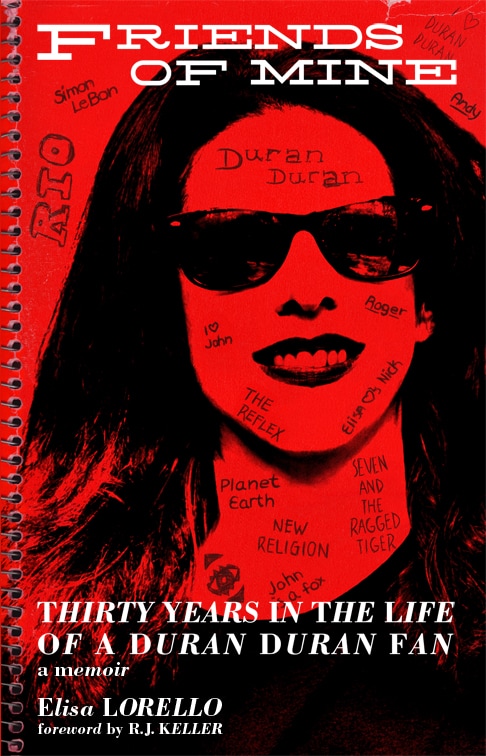
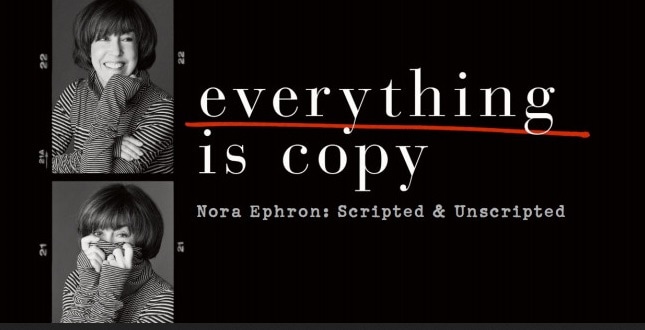

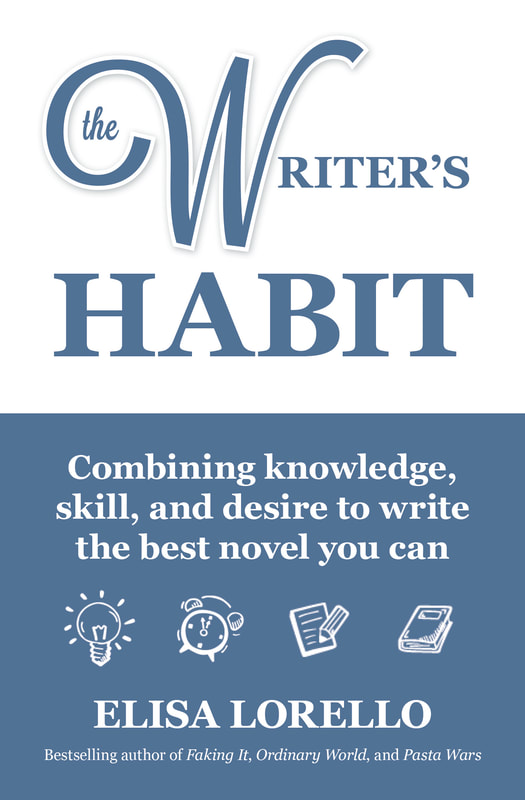
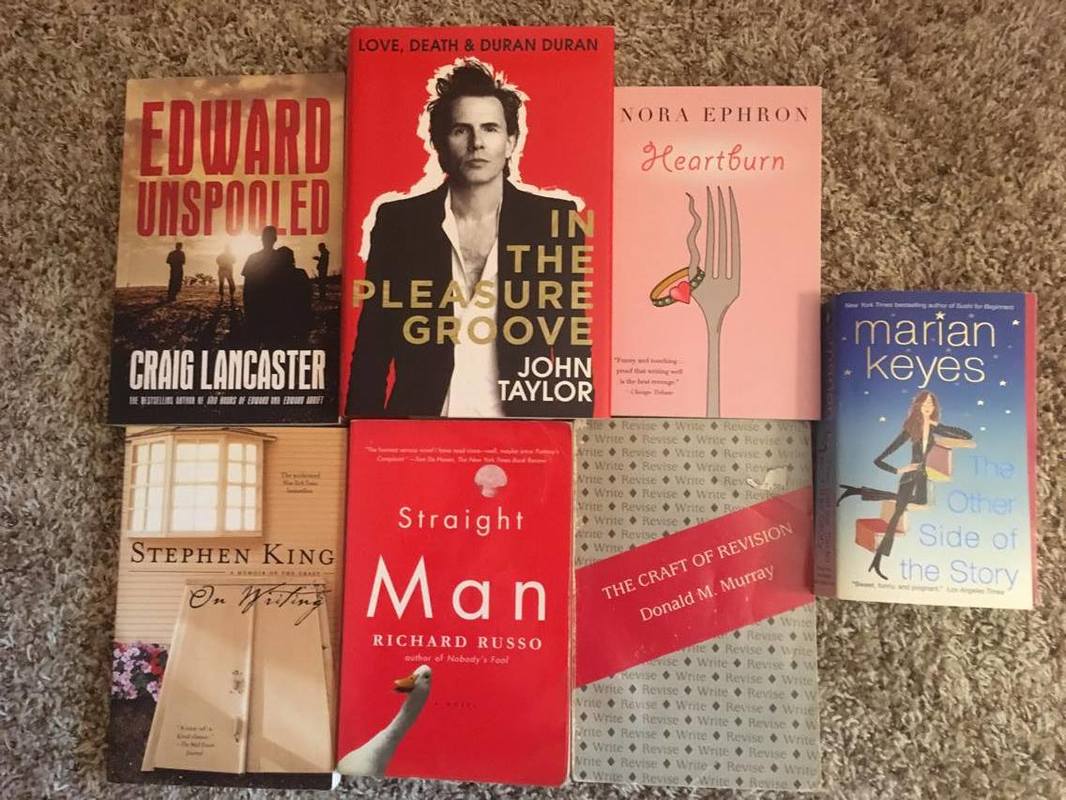
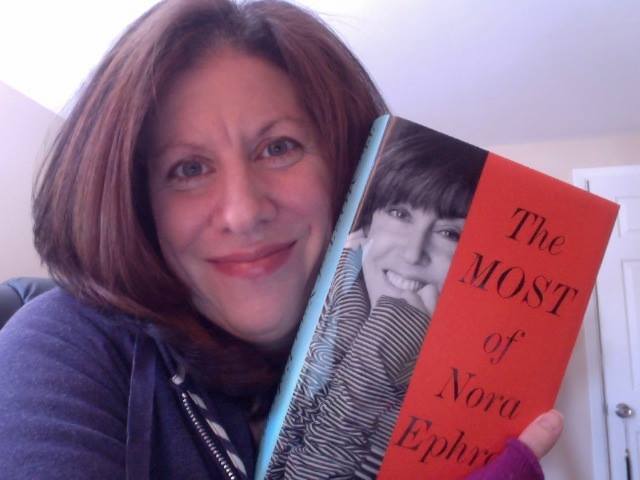
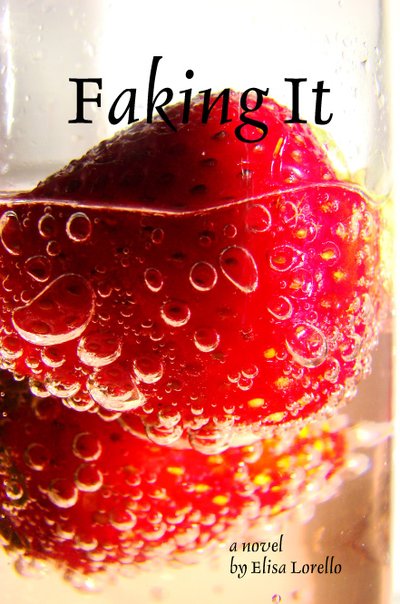
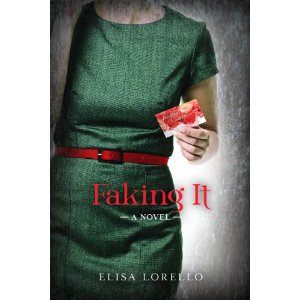
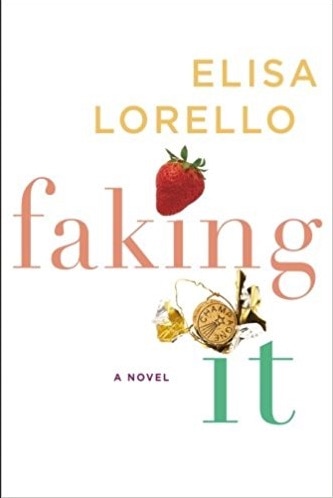
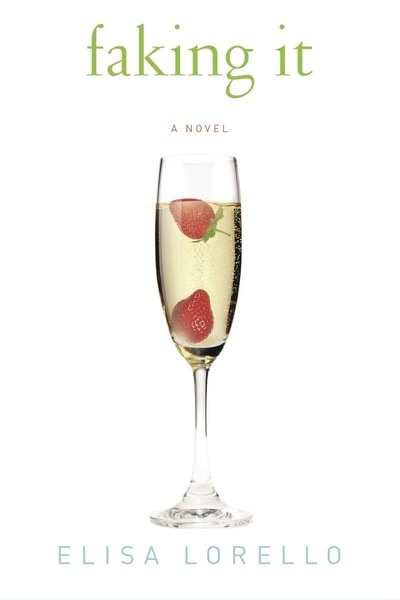

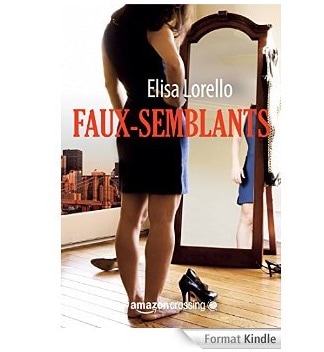

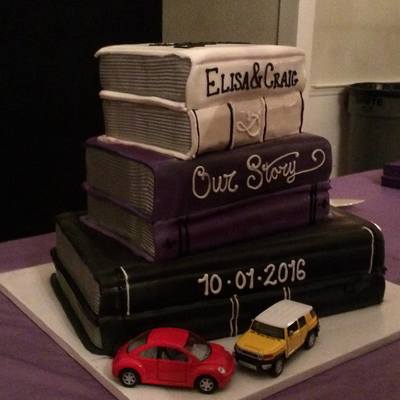
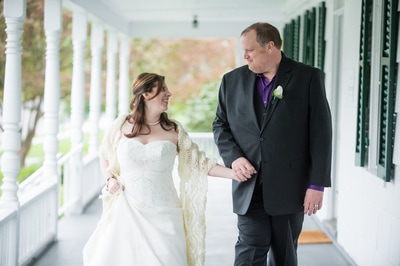
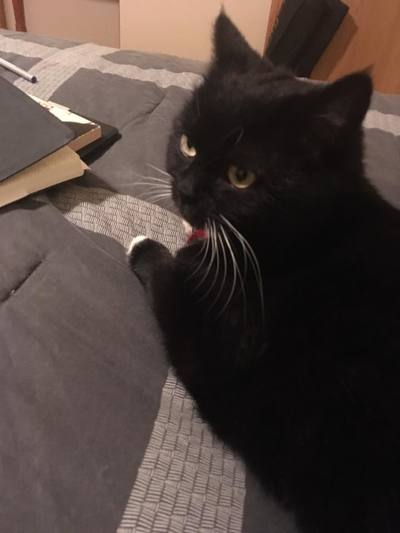
 RSS Feed
RSS Feed